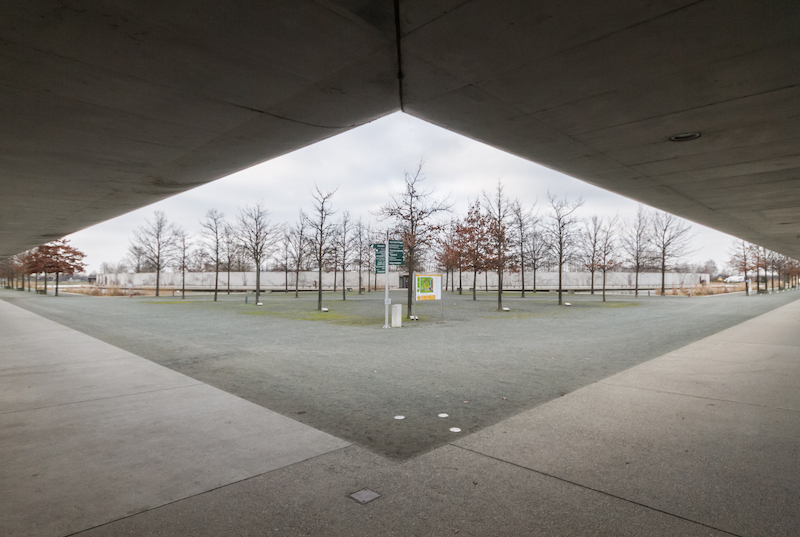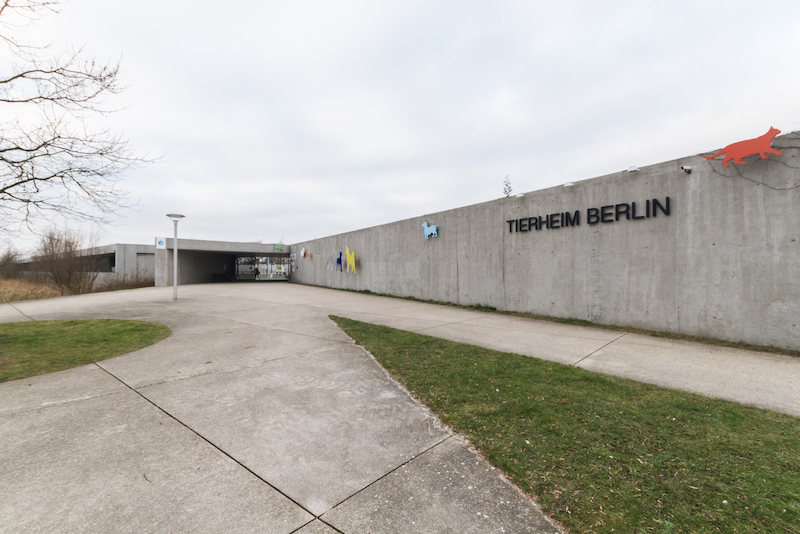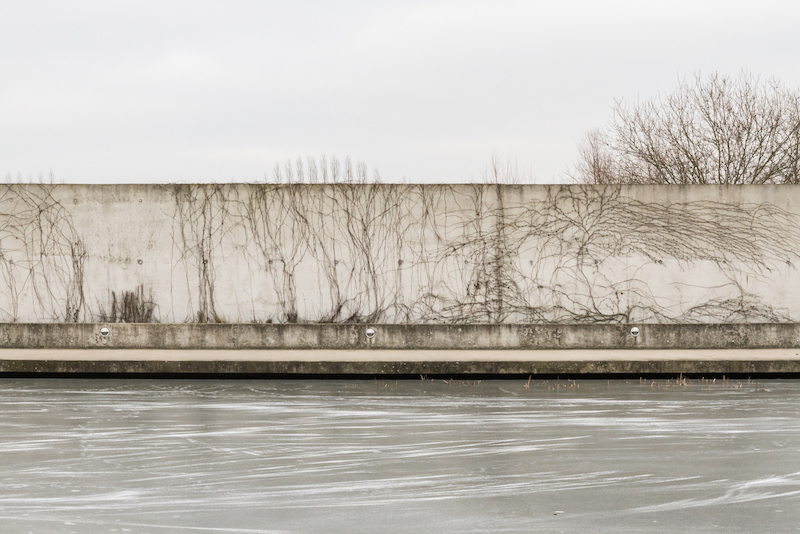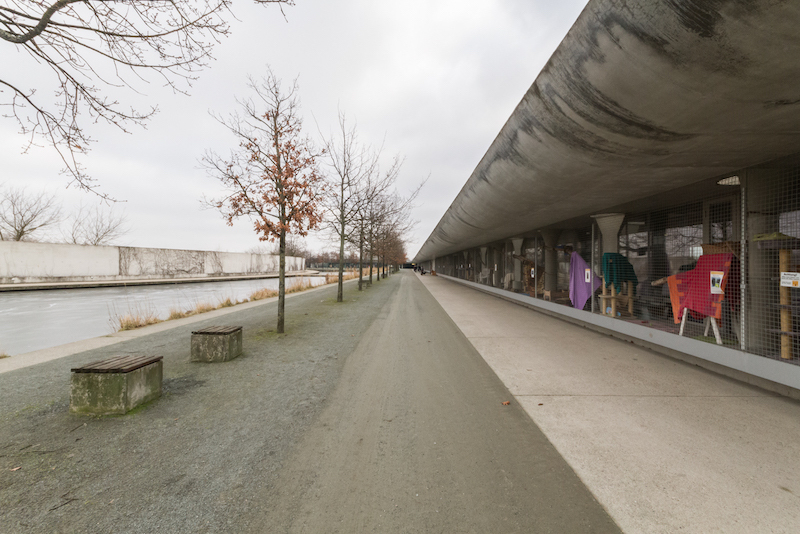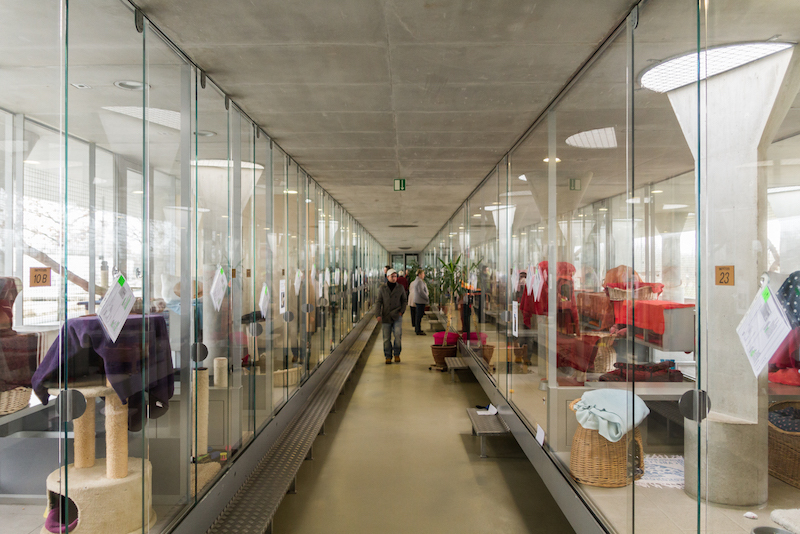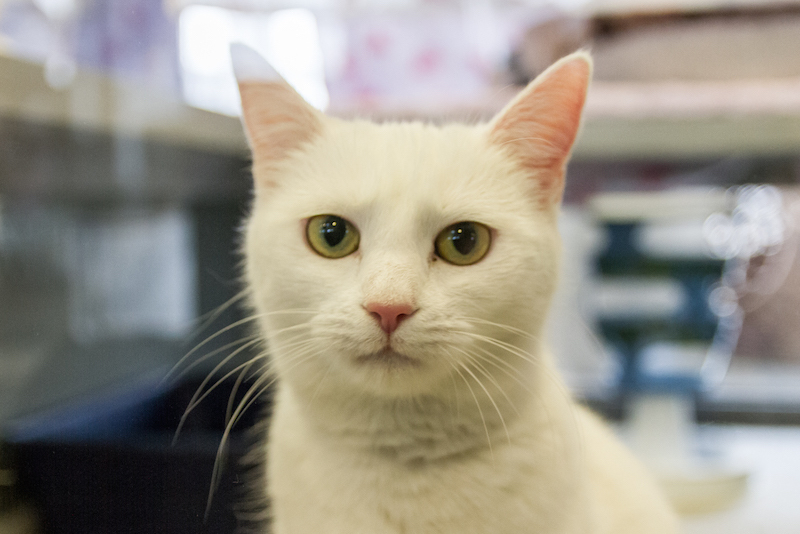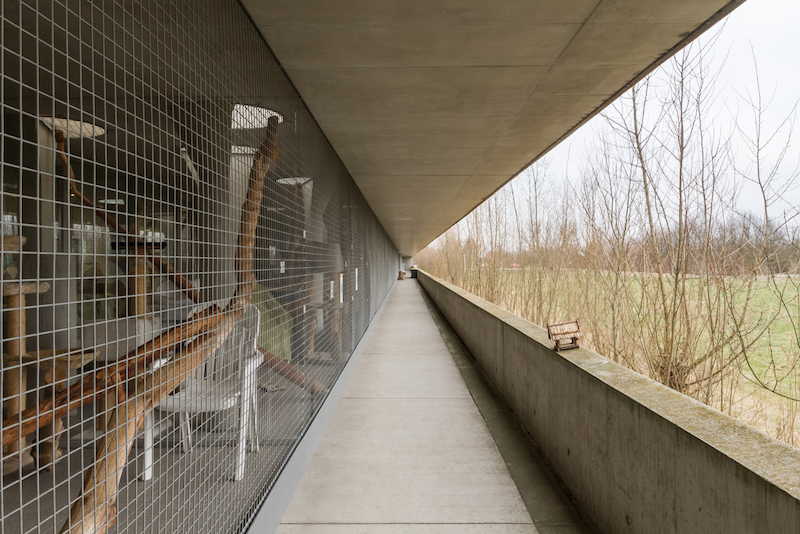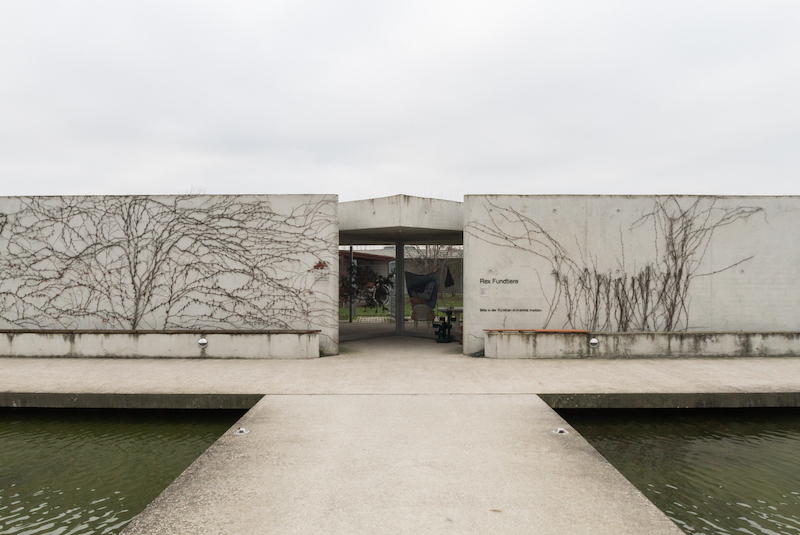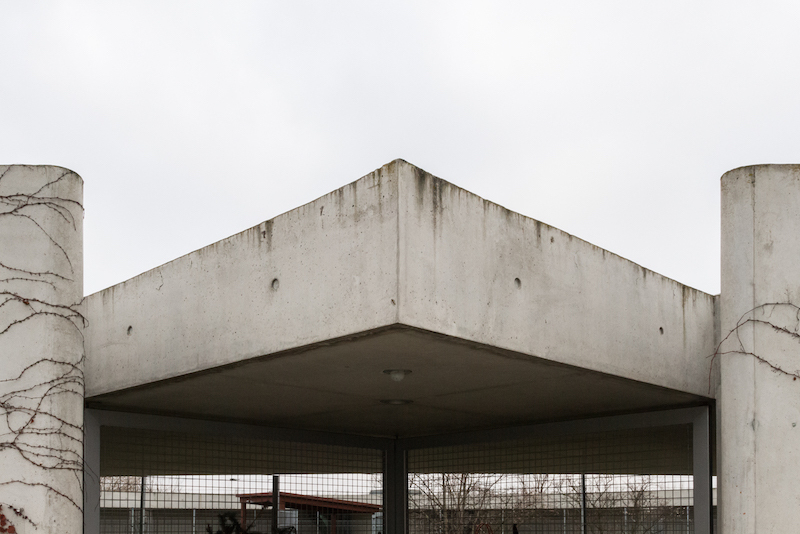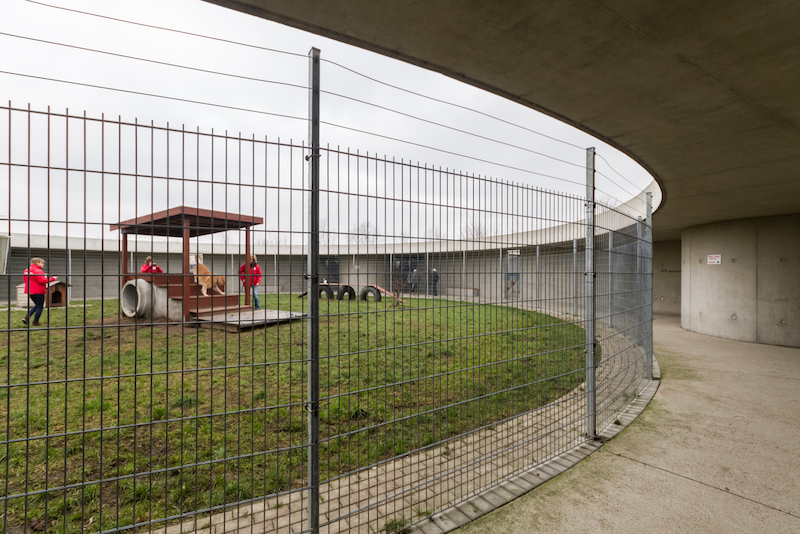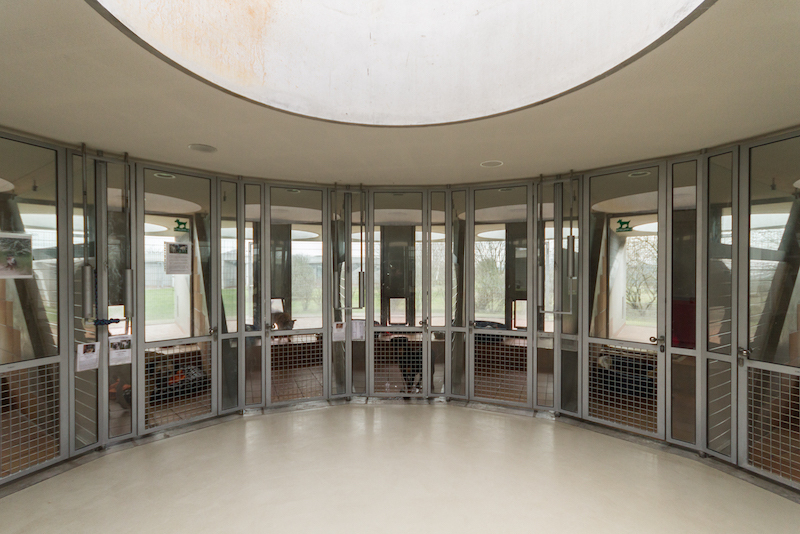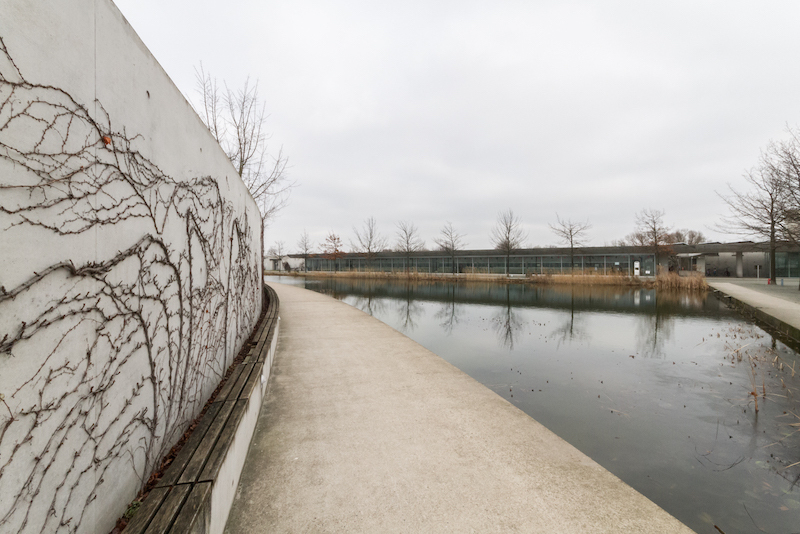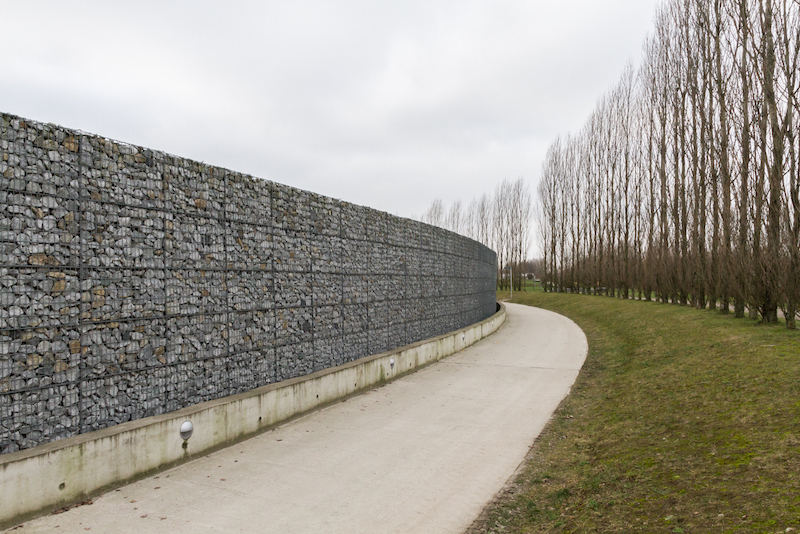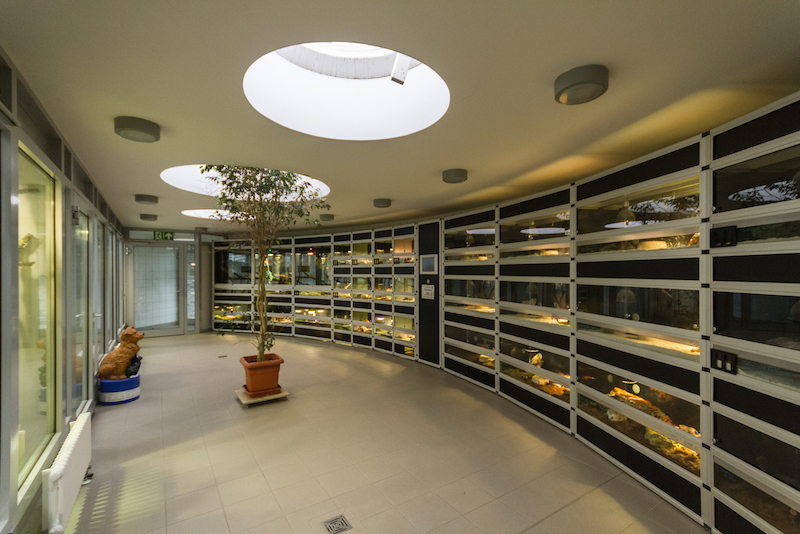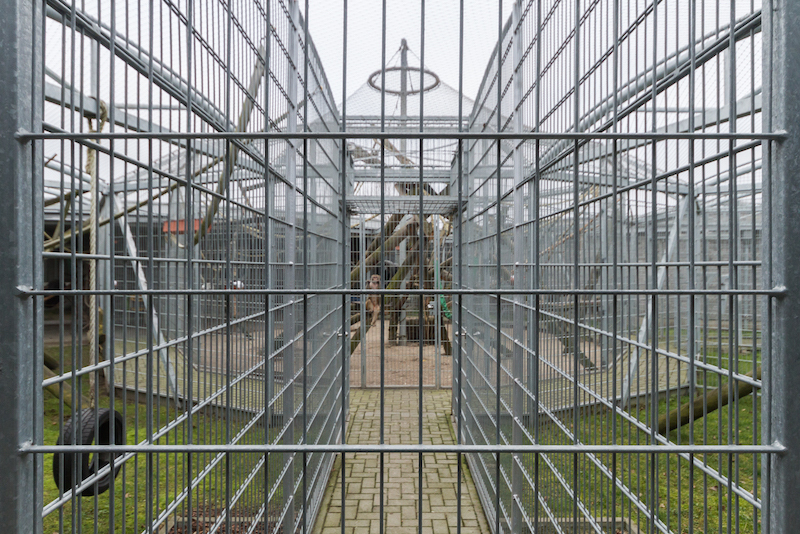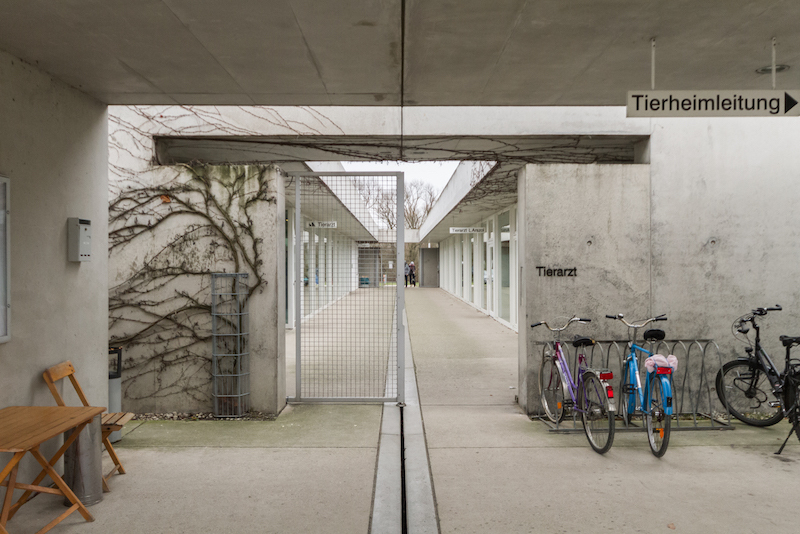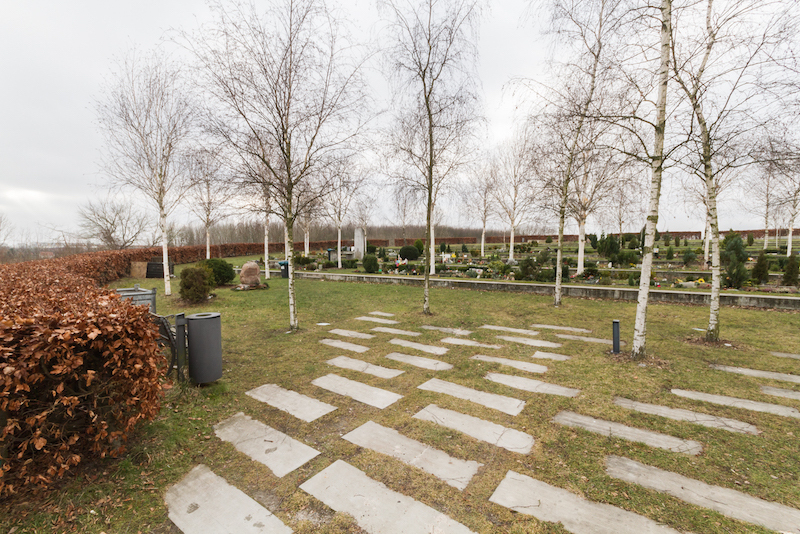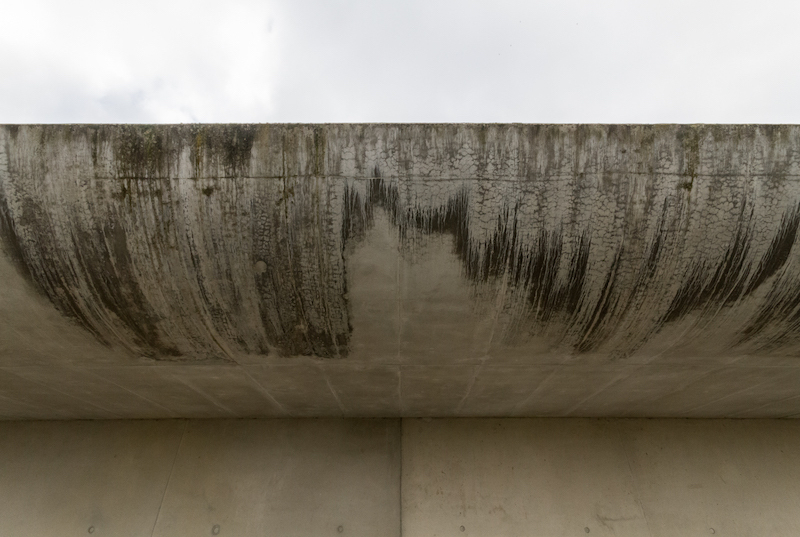The stark Corbusian modernism of Berlin’s Tierheim – “animal home” – may seem a strange stylistic choice for a building meant to shelter homeless pets. Benjamin Busch visited the structure (actually built 2002, rather than 1962), to see how its uncompromising forms have fared with use, and found the solid monumental architecture with its programmatic distinctions and relationship to the natural landscape perfectly suited to its task: maximum cosiness for the animals, and convenience for caretakers and potential new adopters.
Seen from above, the fractal-like Tierheim Berlin resembles an elaborate crop circle. This sci-fi allusion makes perfect sense considering the animal shelter’s otherworldly presence in the peripheral landscape where Berlin meets rural Brandenburg. Emerging from the earth in pure geometric forms, this glass and concrete edifice embraces and augments its natural environment through careful architectural design. Left exposed to the elements for little over a decade, its raw concrete surfaces have begun to show significant signs of wear since its official opening in June 2002. Yet the building’s weathering process is not a sign of failure; it is a sign of the design’s success. Architect Dietrich Bangert was well aware that the béton brut of the Tierheim Berlin would interact ecologically to produce a patina and that the building’s integration into the landscape would only deepen with time.
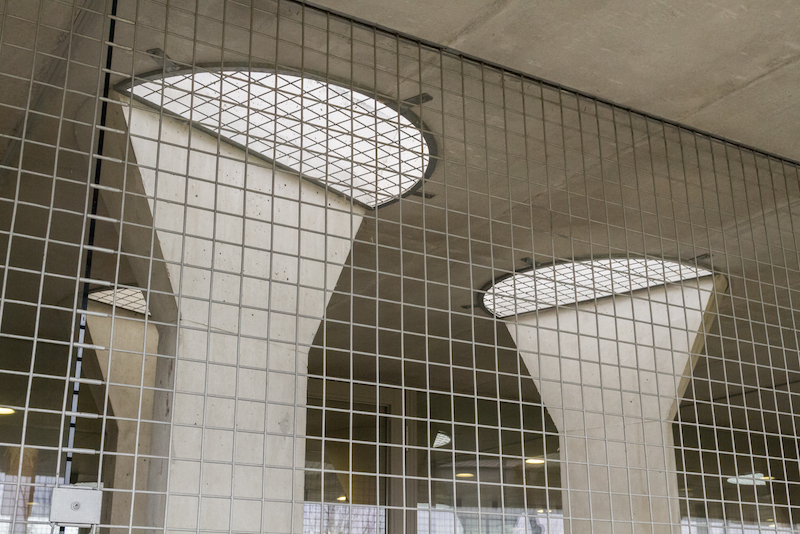
Visiting the Tierheim Berlin in the winter emphasises the building’s interaction with its natural environment, as the extensive use of outdoor passageways becomes vitally apparent in the barren landscape. However, its indoor spaces are consequently granted an amplified cosiness, which only enhances the experience of all kinds of cuteness, from fluffy to feathery to scaly. An astonishing variety of animal species can be found at the animal shelter, revealing the institution’s broad scope. When it opened, there were three houses for cats, five for dogs, one house for small animals, one for birds, a veterinary clinic and even an animal cemetery. Since 2008, several additions have been made: a rescue station for farm animals, one for exotic animals and reptiles, a house for elderly cats, a pen for street cats and a rehabilitation and training centre for dogs. While the brutality of the architecture may be shocking at first, the animal shelter effectively distributes a diverse range of habitats. Spatial enclosures and their adjacencies are determined by the health and well-being needs of particular animal species – some of which simply do not get along – to achieve harmony with each other and the local climate.
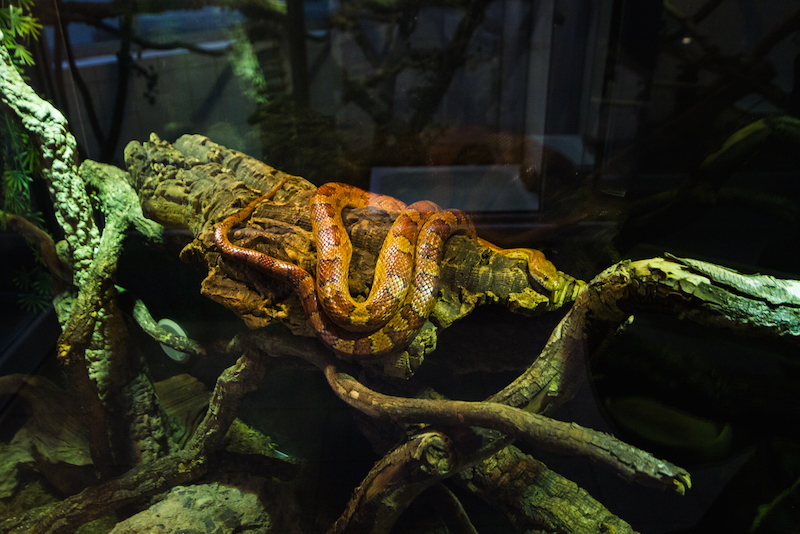
With clear aesthetic references to the works of Le Corbusier (decades after his time), the Tierheim Berlin does not fail to afford its mammalian, reptilian and avian inhabitants a didactic experience of modern architecture. Like the classic Palace of Assembly in Chandigarh, the cantilevered overhangs of the shelter’s arcades express the accumulative adhesion of water to their curved surfaces. The reflecting pool in Berlin, though, differs in that it freezes, producing striated patterns in place of still reflections. Perhaps the Tierheim Berlin finds better comparison to the humble proportions and austere material language of le Corb’s Sainte Marie de La Tourette, reflecting some of the subtle, sculptural gestures of the modernist convent, and working with the plasticity of concrete while placing emphasis on natural light and meditative pathways. Yet, unlike either precedent, the Tierheim Berlin seems to grow from the earth rather than having landed on it from another planet. As the planted vines slowly climb the still smooth and gray concrete walls, nature slowly envelops the building from without, as it continues to protect its natural life within.
- Benjamin Busch is an architectural designer and photographer living in Berlin. Utilising photography as an analytical method, he investigates complex fields of relations within the built environment.




